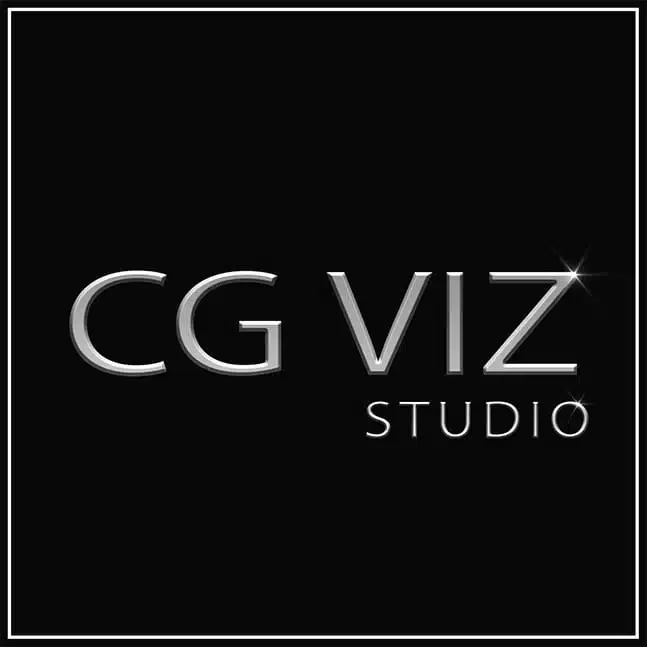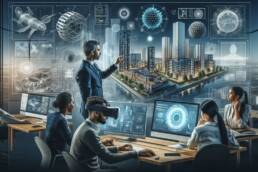3D architectural visualization is a transformative technology that has revolutionized the way architects, developers, and marketers conceptualize and present their projects. By creating detailed pre-built worlds, CG Viz Studio leverages this technology to provide clients with an immersive experience of their designs before they are built. This article delves into the nuances of 3D architectural visualization, its impact on various stakeholders, and the evolving technological landscape that continues to enhance its capabilities.
Key Takeaways
- 3D architectural visualization serves as a digital construction tool, turning blueprints into immersive virtual realities.
- Pre-built visuals are critical in real estate development, aiding in marketing strategies and refining architectural designs based on client feedback.
- Technological advancements like improved rendering techniques and VR/AR integration are elevating the realism and interactivity of 3D models.
- Success stories from CG Viz Studio showcase the effectiveness of custom solutions and the positive impact on client satisfaction.
- The business of 3D visualization demands a deep understanding of market needs, continuous skill development, and a strong brand identity.
The Art of Digital Construction: 3D Architectural Visualization
From Blueprints to Virtual Reality: The Creation Process
At the heart of our craft lies the transformation of architectural blueprints into immersive virtual realities. This journey begins with meticulous 3D modeling, where every detail is captured to create a foundation for the virtual experience. Integrating 3D Architectural Visualization into VR/AR enhances the interactivity, allowing clients to explore and evaluate designs from every angle.
The creation process involves several key steps:
- Translating architectural drawings into 3D models
- Applying textures and lighting to achieve photorealism
- Embedding interactive elements for real-time exploration
This method proves to be very helpful for exterior layouts, as it enables cross-section analysis and a comprehensive understanding of the spatial dynamics. Our commitment to this process ensures that the final presentation not only meets but exceeds client expectations, fostering a deeper connection with the project before it materializes.
The Role of Software in Crafting Photorealistic Environments
In our journey to create immersive pre-built worlds, we’ve come to rely heavily on the prowess of advanced software. Software tools are the backbone of 3D architectural visualization, enabling us to transform basic sketches into stunning, photorealistic environments. These tools not only enhance our efficiency but also allow for an unprecedented level of detail and realism.
3D modeling and rendering techniques are essential in architectural visualization, improving design precision and creating realistic representations. Future trends highlight the importance of digital visualizations in architecture. The software we choose directly impacts the quality of our visualizations and, ultimately, client satisfaction. Here’s a glimpse into the software that powers our creations:
- PromeAI: Bridging the gap between imagination and reality with AI-assisted rendering.
- KeyShot Render: Known for its speed and ease of use in producing high-quality visuals.
- VR and AR technologies: Offering immersive experiences that go beyond traditional presentations.
Our commitment to harnessing the latest software ensures that we stay at the forefront of 3D visualization, delivering projects that resonate with clients and stakeholders alike.
Navigating Client Expectations and Artistic Interpretation
In our journey to create immersive pre-built worlds, we often encounter the delicate dance of aligning client expectations with our artistic interpretation. We strive to balance the aesthetics and functionality that are crucial to the success of any commercial construction project. Our clients come with visions of their future projects, and it’s our task to bring these to life while ensuring practicality and feasibility.
We harness common styles and techniques in 3D rendering to convey powerful messages and emotions, bridging the gap between what’s imagined and what can be realized.
Understanding the client’s perspective is just the beginning. We engage in a collaborative process, where feedback is not just welcomed but essential. Here’s a glimpse into our approach:
- Initial consultation to grasp the project scope and client’s vision
- Presentation of preliminary designs and renderings
- Iterative refinement based on client feedback
- Final delivery of a visualization that resonates with both the client and the intended audience
This iterative process ensures that the final product is not just a rendering, but a fusion of client dreams and our creative expertise.
Client Perspectives: The Transformative Impact of Pre-Built Visuals
Real Estate Development and Marketing Strategies
In the realm of real estate development, the integration of 3D architectural visualization has been nothing short of transformative. 3D visualization in marketing properties enhances public perception, secures funding, and revolutionizes architectural design with immersive experiences and interactive models. By presenting a pre-built world, developers and marketers can showcase potential real estate projects in a way that captures the imagination and interest of clients and investors alike.
We’ve seen firsthand how pre-built visuals can dramatically shift the decision-making process. These visuals not only convey the architectural intent but also the lifestyle and emotions associated with the space.
Moreover, the use of 3D visuals in marketing strategies is not just about the wow factor; it’s a practical tool for real estate agents. It allows them to engage with the community and collaborate with local businesses for promotions, creating a buzz that translates into tangible sales results. Here’s how we’ve leveraged 3D visualization:
- Engaging email newsletters with virtual tours
- Interactive experiences at open houses
- Collaborations with local businesses for cross-promotions
These strategies ensure that our marketing efforts don’t just generate leads—they generate excitement and anticipation for what’s to come.
Architects’ Design Validation and Refinement
We understand the critical role that 3D architectural visualization plays in the design validation and refinement process. It’s a transformative tool that enables architects, designers, and clients to visualize and explore architectural concepts in a realistic, detailed environment. By creating virtual models of proposed designs, we can identify potential issues and make necessary adjustments before construction begins.
The magic of digital rendering lies in its ability to bring sketches and CAD drawings to life. This not only aids in the decision-making process but also provides a platform for architects to validate their designs against the client’s vision and expectations. The iterative process of refinement is streamlined, as changes can be made quickly and efficiently in the digital space.
- Initial concept visualization
- Iterative design modifications
- Final design approval
By embracing the future of architecture visualization, we are not only meeting but exceeding client expectations. Our commitment to delivering high-quality, photorealistic visuals ensures that every project we undertake is a step towards architectural excellence.
Consumer Feedback and Its Influence on Project Evolution
We’ve discovered that 3D visualization serves as a dynamic feedback mechanism, transforming the way we interact with our clients and their customers. By presenting pre-built worlds, we invite users to explore and critique, leading to valuable insights that drive project evolution. This iterative process is not just about identifying design issues; it’s about enhancing the overall user experience and ensuring the project resonates with its intended audience.
Consumer feedback is integral to our workflow, and we’ve seen firsthand how it fosters a sense of community and empowers end-users. Our approach to incorporating feedback is structured yet flexible, allowing for continuous improvement:
- Presenting initial concepts in 3D for early-stage feedback
- Iterating designs based on user input
- Finalizing details to meet both aesthetic and functional standards
We believe that the key to successful project outcomes lies in our ability to listen, adapt, and refine based on consumer insights.
Client testimonials highlight the success of our 3D visualization services, emphasizing enhanced design and customer engagement. The feedback we receive is not just a pat on the back—it’s a catalyst for innovation and refinement in our visualization techniques.
Technological Innovations in 3D Visualization
Advancements in Rendering Techniques and Realism
In our journey through the realm of 3D architectural visualization, we’ve witnessed a remarkable evolution in rendering techniques. The pursuit of hyper-realism has led to the development of sophisticated software capable of producing images that are nearly indistinguishable from photographs. The fidelity of these renderings is not just about aesthetics; it’s about conveying the true essence of a design before it’s built.
Software like Redshift and PromeAI have been game-changers, introducing biased rendering methods that significantly reduce render times while maintaining high quality. This efficiency allows for more iterations and ultimately, a more refined end product. Here’s a glimpse into the impact of these advancements:
- Enhanced lighting and shadow accuracy
- Improved material representation
- Greater environmental interaction
- More dynamic and realistic animations
As we embrace these technological strides, we find ourselves at a crossroads where art meets science. The line between the virtual and the real continues to blur, providing clients and designers alike with a powerful tool to preview and perfect their visions.
The implications of these advancements extend beyond mere presentation. They empower architects and clients to make informed decisions, reducing the risk of costly changes during construction. The interior rendering and exterior rendering capabilities have particularly benefited from these innovations, allowing for a comprehensive preview of projects in their entirety.
Integration of Virtual and Augmented Reality in Presentations
We’ve witnessed a paradigm shift in architectural presentations with the integration of virtual and augmented reality technologies. These immersive tools have revolutionized the way clients and stakeholders experience pre-built environments, offering a new dimension of interaction and understanding.
Augmented reality (AR), in particular, has become a cornerstone in enhancing visualization. By overlaying virtual 3D models onto the physical world, AR allows architects and clients to explore design concepts in situ, providing a tangible sense of scale and context that traditional methods cannot match.
- The Impact of Augmented Reality in Technical Architecture Design
- Enhances visualization with virtual overlays
- Provides a real-world context to designs
- Facilitates immediate feedback and decision-making
Embracing these technologies not only elevates the presentation experience but also streamlines the design and approval processes, leading to more informed decisions and ultimately, better-built environments.
The Future of 3D Modeling: AI and Machine Learning Contributions
As we explore the future of 3D modeling, we’re witnessing a significant shift towards the integration of artificial intelligence (AI) and machine learning. These technologies are not just enhancing existing workflows but are creating entirely new possibilities for designers and architects. Machine learning plays a pivotal role in this paradigm shift, allowing 3D models to adapt, learn, and continuously improve over time.
The marriage of AI with traditional 3D modeling tools is revolutionizing the industry. For instance, Autodesk Maya’s introduction of AI-driven Maya Assist exemplifies how natural language processing can simplify complex tasks. This innovation is just the tip of the iceberg, with platforms like NVIDIA’s Omniverse and Kapnetix pushing the boundaries further.
We’re on the cusp of a modeling revolution, where AI and machine learning are set to be game changers in the world of 3D modeling.
Here’s a glimpse of what AI and machine learning are bringing to the table:
- Enhanced creativity and efficiency in 3D production and VFX.
- Automated and optimized workflows, reducing the time from concept to completion.
- Real-time feedback and iterative design processes that respond to user input.
- Predictive analytics for better decision-making in design stages.
The potential for AI to transform 3D modeling is immense, and we’re just beginning to scratch the surface of what’s possible.
Case Studies: Success Stories from CG Viz Studio
Highlighting Notable Projects and Client Collaborations
At CG Viz Studio, we take pride in our portfolio of notable projects and the strong collaborations we’ve built with our clients. Our journey has been marked by a series of successful partnerships that have pushed the boundaries of 3D architectural visualization. Each project is a testament to our commitment to excellence and our ability to translate our clients’ visions into stunning visual narratives.
- Momentum 360: Exceeding expectations with a portfolio that speaks for itself, featuring interior shots and aerial views that reflect our dedication to quality.
- EwingCole: A collaboration that showcases our expertise in event photography and architectural visualization.
- WeWork: Partnering to create dynamic workspaces that are both functional and visually compelling.
Our approach is not just about meeting the brief but enhancing it with our creative insights. We strive to deliver results that not only satisfy but also inspire our clients and their audiences.
As we continue to grow and take on new challenges, we remain focused on delivering high-quality, photorealistic renderings that make an impact. Our clients, including industry leaders like MIR, Beauty and Bit, and Steelblue, have come to rely on our ability to deliver exceptional visual content that drives their projects forward.
Overcoming Challenges with Custom Solutions
In our journey to deliver exceptional 3D architectural visualizations, we’ve encountered a myriad of challenges. Each project comes with its unique set of requirements and obstacles. We pride ourselves on our ability to craft custom solutions that not only meet but exceed our clients’ expectations. For instance, when faced with the challenge of inaccuracy and inconsistency in AI rendering solutions, we integrate 3D metadata to enhance precision and reliability.
Our approach is holistic, considering every aspect of the visualization process. Here’s a glimpse into how we tackle common issues:
- Personalization: We create bespoke avatars and tailored experiences that resonate with individual users.
- Realism: Our superior 3D modeling captures every detail, ensuring that virtual experiences are as engaging as possible.
- Cultural Sensitivity: We adapt our visualizations to respect the cultural nuances of a diverse audience.
- Client Collaboration: We maintain open lines of communication, allowing for seamless feedback and iterations.
By maintaining a flexible and innovative mindset, we turn potential setbacks into opportunities for growth and improvement. Our commitment to customization has not only satisfied our clients but has also set us apart in the competitive field of architectural visualization.
Client Testimonials and the Measure of Success
We’ve always believed that the true measure of our success lies in the satisfaction of our clients. Client testimonials serve as a testament to the quality of our work and the value we bring to each project. Our clients’ feedback is not just a source of pride, but a crucial component of our continuous improvement process.
- Peter Chung praised our organized workflow and excellent rendering quality.
- Tom Ingleton highlighted our ability to deliver under tight deadlines.
- Anderson Creed recommended us for our skilled team and timely project completion.
Our commitment to excellence is reflected in the immersive experiences we create, setting properties apart and driving conversions.
When comparing 3D rendering services, it’s essential to look for quality, reliability, and a proven track record. We invite you to explore our portfolio and read through the testimonials that speak volumes about our dedication to bringing visions to life.
Navigating the Business of 3D Visualization
Understanding the Market and Client Demands
In the dynamic field of 3D architectural visualization, we’ve learned that understanding the market and client demands is crucial for success. We tailor our services to meet the specific needs of each client, ensuring that our visualizations not only capture the essence of their vision but also align with market trends and expectations. Our approach involves a deep dive into the demographics, behavior, and preferences of the target audience, allowing us to deliver highly targeted content that resonates and drives engagement.
Creativity, collaboration, and enhanced aesthetics are at the heart of our high-end 3D visualization services. We revolutionize architectural design by integrating these elements seamlessly into our work. The following list outlines the core aspects we focus on to stay ahead in the market:
- Adapting to cultural sensitivities and multilingual audiences
- Offering comprehensive services including careers, FAQ, pricing, packages, and more
- Utilizing advanced marketing tools for personalized content and lead nurturing
- Providing quick turnarounds and open communication for client satisfaction
Our commitment to continuous improvement and strategic insights ensures that we not only meet but exceed client expectations. We’re always exploring new ways to refine our techniques and deliver maximum value.
By keeping a pulse on the latest technological innovations and rendering techniques, we ensure that our services remain at the forefront of the industry. This dedication to excellence has led to numerous success stories, which we proudly showcase in our portfolio.
The Importance of Continuous Learning and Skill Development
In the ever-evolving field of 3D architectural visualization, we recognize the necessity of continuous learning and skill development. Our growth is directly tied to our ability to adapt and master new techniques and technologies. The landscape of rendering artists is dynamic, with new software and methods emerging regularly. To stay ahead, we engage in a variety of activities:
- Participating in mentor-driven programs to refine our expertise.
- Attending industry events and hackathons to challenge our creativity and problem-solving skills.
- Diving into comprehensive guides and expert sessions to deepen our understanding of complex topics.
We believe that the journey of learning is perpetual, and each step forward enhances our capacity to deliver exceptional visualizations that captivate and communicate.
Our commitment to skill enhancement is not just about keeping pace; it’s about setting the standard for excellence in our industry. By fostering a culture of knowledge sharing and innovation, we ensure that our team is equipped to meet and exceed the expectations of our clients.
Building a Brand in the Competitive World of Architectural Visualization
In the realm of architectural visualization, branding is more than a mere logo or color scheme; it’s the essence of your story told through every rendered pixel. We understand that to stand out, we must create a narrative that resonates with our audience, showcasing not just structures, but the dreams and aspirations they embody.
Building a brand in this competitive industry requires a strategic approach that blends creativity with technical prowess. It’s about constructing a universe that reflects our brand’s values and connects with clients on an emotional level.
To achieve this, we focus on several key areas:
- Crafting a unique visual style that is instantly recognizable
- Ensuring consistency across all forms of media
- Engaging with our community through social media and events
- Providing exceptional customer service to create lasting relationships
By using 3D rendering services to build our brand, we’ve seen a marked improvement in property sales, attracting new buyers and setting ourselves apart in the marketplace.
Embark on a journey through the intricate world of high-end 3D visualization with CG Viz Studio. Our team of experts is dedicated to bringing your visions to life with unparalleled precision and creativity. Whether you’re looking to enhance your project’s visual impact or explore our extensive portfolio, we invite you to visit our website and discover the endless possibilities. Don’t hesitate to reach out for a personalized consultation or to inquire about our services. Let’s shape the future of visualization together. Visit us now at CG Viz Studio!
Conclusion
In the realm of architectural design and real estate development, the enchantment of pre-built worlds through 3D architectural visualization has proven to be a transformative power. CG Viz Studio, with its exceptional expertise in creating photorealistic 3D images and animations, has established itself as a leader in this field. The glowing testimonials from satisfied clients worldwide underscore the studio’s ability to bring visions to life, enabling architects and developers to preview and refine their projects with unprecedented clarity. As we have explored in this article, the magic of 3D visualization lies not only in its aesthetic appeal but also in its practical utility, offering a compelling glimpse into the future of design and construction. The convergence of technology and creativity at CG Viz Studio continues to push the boundaries, ensuring that the pre-built worlds they craft today will become the cherished spaces of tomorrow.
Frequently Asked Questions
What is 3D architectural visualization and how does it benefit clients?
3D architectural visualization is the process of creating digital models of buildings or spaces before they are built. It benefits clients by providing a realistic preview of the project, aiding in design decisions, material selection, and marketing to potential buyers or investors.
What services does CG Viz Studio offer?
CG Viz Studio offers a range of services including 3D architecture visualization, 3D interior and exterior visualization, 3D modeling from CAD drawings, 3D product visualization, and animation services for various industries.
How can I get in touch with CG Viz Studio for a project?
You can contact CG Viz Studio through their website’s contact page, by calling their WhatsApp number +91 6392097834, or by connecting with the founder, Arpit Pandey, on Skype.
Can CG Viz Studio handle complex projects with tight deadlines?
Yes, CG Viz Studio is known for their ability to manage complex projects within tight deadlines, providing high-quality, photorealistic visualizations and animations.
What makes CG Viz Studio stand out in the field of 3D visualization?
CG Viz Studio stands out for its dedication to creating outstanding photorealistic visuals, competitive pricing, and exceptional customer service with a fast turnaround time.
Where can I see examples of CG Viz Studio’s work?
Examples of CG Viz Studio’s work can be viewed on their website’s 3D visualization portfolio, 3D renders gallery, and through their shop page where they offer high-quality 3D models.



